This post will show you how to add separators and spacers to the Start menu and taskbar in Windows 11. Windows 11 has a fresh Start menu and taskbar with a new design and capabilities. Unfortunately, some of the useful Start menu features from Windows 10 are missing in Windows 11. The most notable omissions are folders, groups, and the inability to move the taskbar around.
Advertisеment
While we wait for Microsoft to deliver more features to the Start menu in Windows 11, enthusiasts came up with a neat little trick that lets you organize icons on the taskbar and Start menu into simple groups with dividers and spacers.
You need two apps, blank.exe and seperator.exe. The first one creates an empty space on the taskbar or in the start menu. The second one adds a divider.
Add Separators and Spacers to Windows 11 Start Menu and Taskbar
- Download the Blank.exe app from this link.
- Now, download the Seperator.exe app using this link.
- Unpack and put the executable files to a folder from where they will run.
- Click and hold the right mouse button on the seperator.exe file, slightly move it, and then release the right mouse button to reveal a little context menu.
- Select Create Shortcuts here.
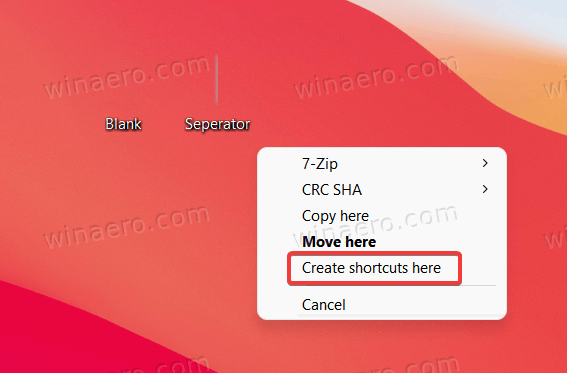
- Now, rename the newly made shortcut. Delete all characters in the name, then hold the Alt button and type 0160 (consequently). That lets you use blanks as file names (you cannot just type a space and save it).
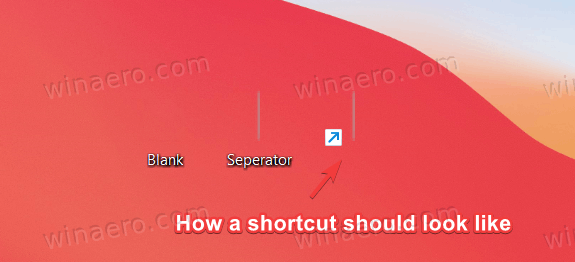
- Right-click the shortcut and select Pin to Start. You now have a separator in the Start menu.
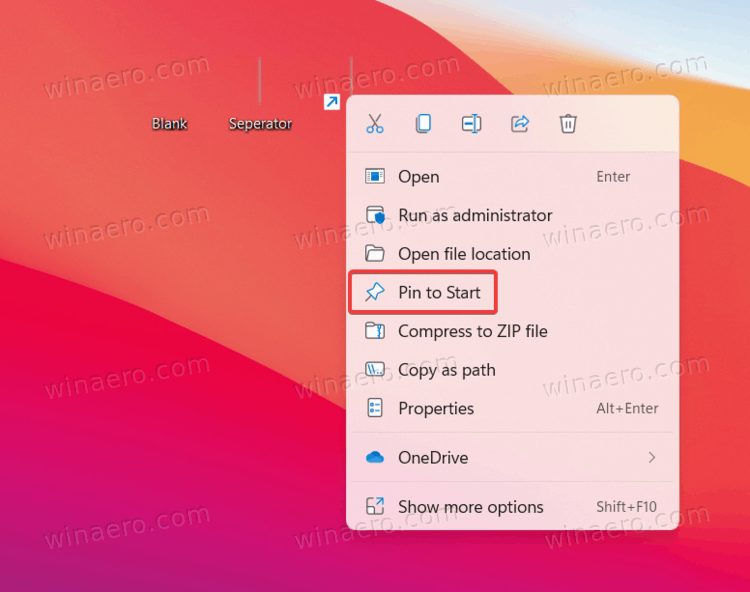
- Open the Start menu and right-click the separator (divider). Select Open File Location.

- In a new window, select your shortcut and press Shift + F10.
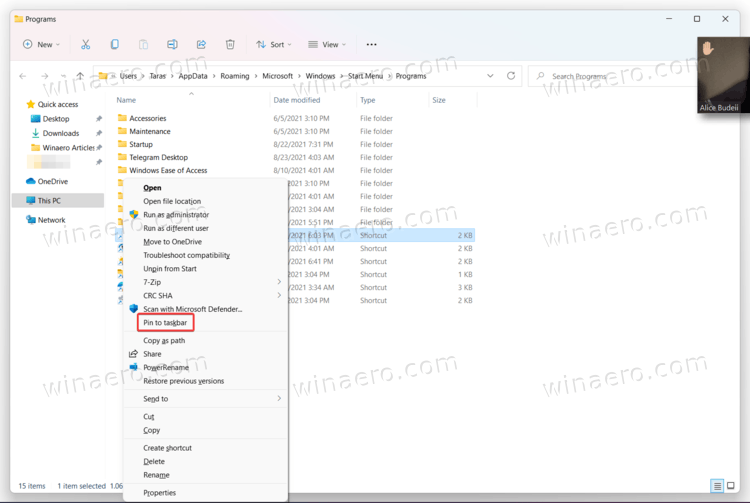
- Click Pin to taskbar. You now have a divider on the taskbar.
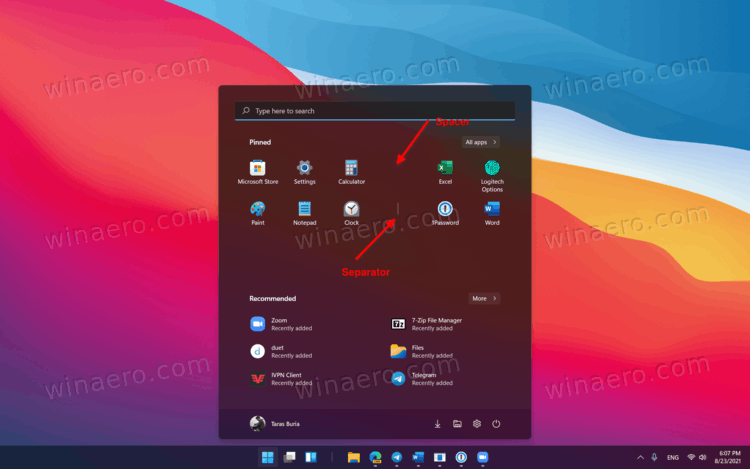
- If you want to create a blank space, do that to the
Blank.exefile. Note that you do not need to launch those dummy executable files. They do nothing, and they are not a threat to your system's safety.
If you want to create more than a single blank space or separator, repeat the steps above, except Step 6. You need to enter an additional Alt + 0160 sequence for each consequent shortcut. For example, to create a second shortcut, you need to type Alt + 0160 two times, three times for a third shortcut, four times for a fourth, and so on.
After creating enough shortcuts, you can move them around to experiment and create a unique, more organized Start menu or taskbar. Of course, this hack is not as convenient as folders and groups in the Start menu in Windows 10, but at least it provides a little more customization for users.
h/t Deskkmodder
Support us
Winaero greatly relies on your support. You can help the site keep bringing you interesting and useful content and software by using these options:

thanks but I don’t see what use it can have…o not?
Good tip, but to be honest, the grid is already a tiny 6×3. The last thing we need is to waste more space lol.
If/When they allow us to get rid of that stupid recommended section as well as resize the start menu, then this will be more useful.
Hopefully they do get rid of the recommended section, but until then… Stardock has come out with Start11, and it lets you have the Win 11 Start Menu without the recommended section. :)
For a few dollars you can pickup a copy of Stardock’s Start11 app and customize your Start menu and task bar. Using Start11 you can get rid of the recommended section, and make numerous other tweaks. I’ve done this and turned my Start menu into an easily resizable app launcher which currently has 45 apps. I’m not affiliated with Stardock – I just enjoy the convenience/features offered by their app.
Thanks Sergey! They will start with current menu which most dislike and end up the way it is currently on Windows 10, with 100s of tweaks/undos. :D :P
I find these to very handy. I did come across one problem though. If you copy them for purposes of saving a backup copy all the shortcuts have the .lnk extension showing. Therefore, you must remake the shortcuts if you ever had to redo Windows. They work great as long as they are not moved from original location.
I cannot get the additional separators to work. When I go to pin it to Taskbar, the only option available is ‘Unpin from Taskbar’.
I have the same issue as Scott except that first what I get in Step 7 is “Unpin from Start.”
You have to copy and paste another separator.exe in the separator folder, and then rename it with a second series of 0160.
Same here. The first time works fine, but when I repeat the process, it only allows me to ‘Unpin from Start Menu’
copy the exe file to a file with a new name, then try to pin once again.
This works great for the taskbar item; not being able to separate them sets my OCD off :)
Thanks!!
1. My Windows 11 cant create the blank name file by pressing Alt and type 0160?
2. When creating the 2nd shortcut, cant really pin it separately coz the system recognise it as the same as the 1st one?
Cheers.
Didn’t work for me. After creating the shortcut and choosing pin to Start, nothing shows up in the Start menu.
I just dragged it.. once got on main desktop and then also did another one, just renaming it black2.
If anyone is having issues with multiple working you need to create a new folder for each copy, then do the do the additional alt + 160s.
For instance C:\Blanks has folders Blank1 – Blank 6. In each Folder is Blank1.exe1 -Blank6.exe. Then in each folder you create one shortcut with the appropriate amount of alt + 160 entries. The folder blank3 would have blank3.exe and ***.lnk. *** indicating the blank spaces. The lnk extension probably won’t show up even if you have file name extensions turned on.
Also a helpful hint. If you lose track of how many alt+160s you have done, hold the left arrow until the cursor stops, then tap the right arrow until the cursor stops. Count the amount of right arrow taps and that is how many blank spaces you have entered.
Seems like ‘Pin to Taskbar’ has disappeared.